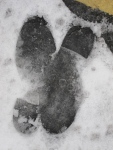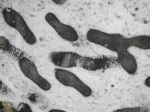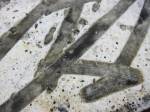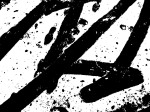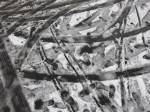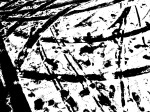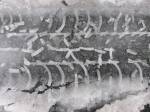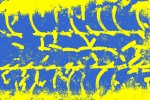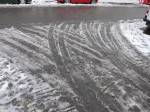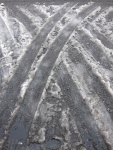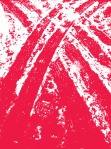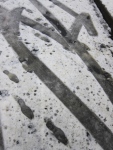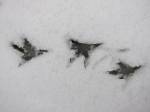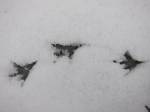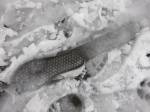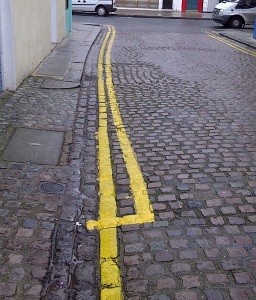Random snow stuff, really. Started with thinking about black and white (visual grammar) compositions using rough edged snow against the dark tarmac. This soon started to include everyday objects with very distinct, often secondary forms (shoe prints, tyre tracks). For my academic contexts piece, I’m thinking about something to do with how rough/natural/accidental/worn forms can combine/coincide with forms which are very deliberate/’straight’ and this sort of fits with that. A bit.
Played with a few in photoshop, just to see what impact texture and colour could have and get to know the software a bit better. Anything I’ve done is pretty much through the ADJUSTMENTS tab (either the thresholds or gradient map controls).
I didn’t spend a lot of time altering the images (finding the best colours, cropping, etc) but it has given me some ideas for how textures like this could be used in wider design pieces – poster background, logo elements, etc. In its altered form, the snow can look like anything from a virus under a microscope, to calligraphy or marbled paper.
My favourite are the birds’ feet which look like they could be made into a wall paper border. Funnily, each foot looks like a bird or an aeroplane.
Click on the one of the images and it becomes a slide show (apparently).
